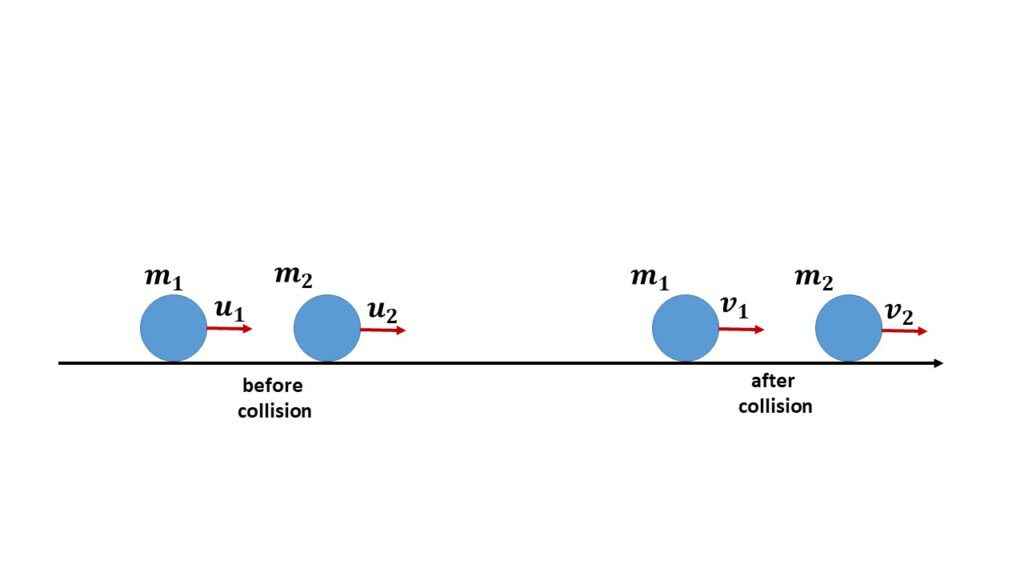Coefficient of restitution:
Let us consider, \( u_1 \) and \( u_2 \) be the velocities of two colliding bodies immediately before impact along the line of impact, \( v_1 \) and \( v_2 \) be the velocities of that colliding bodies respectively just after the impact along the same line of impact. So the coefficient of restitution is given by,
\( \displaystyle{e=\frac{v_2-v_1}{u_1-u_2}} \)

When two bodies collide with each other, the ratio of relative velocity of separation of that colliding bodies along the line of impact immediately after the impact, to their relative velocity of approach just before the impact along the same line, is called the coefficient of restitution.
- Coefficient of restitution depends on the material of the colliding bodies.
- It is independent of the mass of the colliding bodies.
- It is always positive, and lies between 0 to 1.
Case I:
If \( e=0 \), the collision is called perfectly inelastic and in this case, the two bodies do not separate after impact.
Case II:
If \( e=1 \), the collision is called perfectly elastic. In this case the relative velocity of approach of the colliding bodies just before the impact along the line of impact is equal to the relative velocity of separation of that colliding bodies along the same line immediately after the impact.